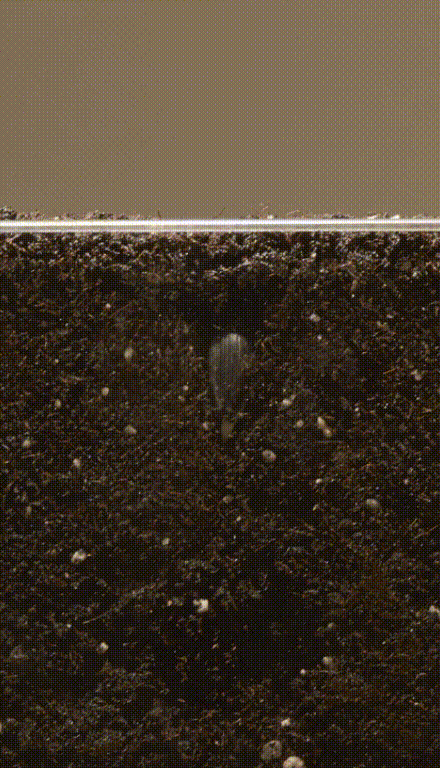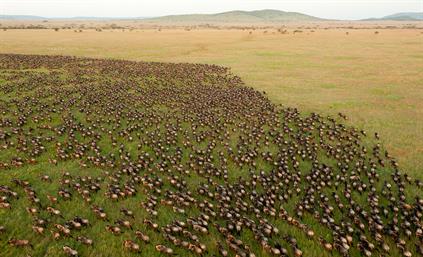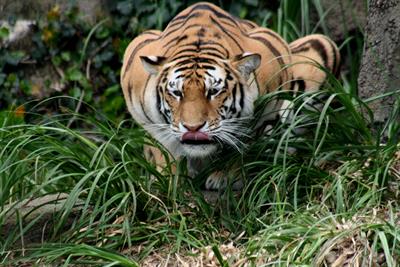
PUMPA - SMART LEARNING
எங்கள் ஆசிரியர்களுடன் 1-ஆன்-1 ஆலோசனை நேரத்தைப் பெறுங்கள். டாப்பர் ஆவதற்கு நாங்கள் பயிற்சி அளிப்போம்
Book Free DemoWhat will you do first if you see a person becoming unconscious? You may check whether he is breathing, or you may check his pulse or for any body movements. If you see any of these movements (breathing or pulse or body movements), you can decide that the person is alive. So, we have a notion that a living organism is alive if it has a movement.
An organism's movement is the act of moving in such a way that a change in position or posture occurs.
Movement in plants:

Germination of a plant
Seed germinates and grows into a plant by pushing the soil aside. If there is no growth of the plant, there will be no movement of it. In plants, movement indicates the plant's growth, whereas, in animals, movement is not solely for growth.
Movement in animals:

Migration of Wildebeests in Africa
Imagine you are touching a hot pot with bare hands. You will immediately remove your hands from it. If a dog chases a cat, the cat will run fast to save its life. So, in animals, movement will happen due to environmental changes. These environmental changes may be favourable or unfavourable.
For example, blue wildebeest, an African animal, migrates around 2000 km due to their unfavourable environmental conditions. They follow the rains to get food and water. More than \(1.5\) million wildebeests migrate from Serengeti in Tanzania to the Masai Mara in Kenya.
On the other hand, carnivores like lions and crocodiles have favourable conditions during the wildebeest migration. They move towards these herds to hunt the wildebeests and get their food.
Stimulus:
Stimulus is defined as a detectable change in an organism's environment that results in the functional activity of an organism. The change may be physical or chemical.
Example:
- If you see a honeybee flying around you, then to escape from its bite, you will try to move your body away from it. This movement of your body responds to the stimuli of sight that a bee flying around you.
- If you see or smell tasty food, then you will secrete saliva in your mouth. This secretion of saliva is a response to the stimuli of sight or smell.
Similarly, all living organisms respond to different kinds of stimuli like light, heat, cold, sound, smell, taste, touch, pressure, pain or the force of gravity etc. Thus, on receiving a stimulus, the body responds in a manner that is most appropriate for its survival and functioning.
Note: We will study these different kinds of sense organs and their receptors in the following object.
Controlled movements:

Tiger during a hunt
Controlled movements are movements in which the power is restrained and regulated, which subsequently influences the speed and acceleration of the movements.
Have you ever seen the movement of a tiger during a hunt? It carefully controls every step of the movement so that the prey won't notice the tiger's approach towards it. Similarly, if you run fast, your heart will beat more quickly, and lung muscles expand and contracts faster and if you walk slowly, your heart will beat normal and lung expand and contract at normal rate.
From the above examples, we can say, controlling movements is essential for any living organism, both voluntarily and involuntarily, to make an appropriate movement if there is a change in the environmental condition.
Coordination of movements:
Coordination of movement is the systematic, coordinated, and effective interaction of various organs to create a suitable response to varied stimuli.
If you run fast, your muscles need more energy, and to get more energy, blood flow in the muscle has to be high. So, the heart will beat faster, and the lungs will contract and expand fast to diffuse more oxygen in the blood.
All these activities have to be coordinated simultaneously to perform the body's functions (in this case, it is running). Thus, to deliver the optimal reaction to stimuli, all organs must operate together in a well-coordinated manner.
Important!
In animals, including humans, the coordination between the various cells and organs is essential for their diverse activities to maintain physiological balance called homeostasis.
Coordination between numerous cells and organs is crucial in animals, including humans, for their diverse actions.
So, coordination of movements is also very important to do the required function by an organism.
In multicellular organisms, controlled and coordinated movements are provided by systems with specialised tissues.
Reference:
https://commons.wikimedia.org/wiki/File:Wildebeest_Migration_in_Serengeti_National_Park,_Tanzania.jpg
https://commons.wikimedia.org/wiki/File:Hunting_tiger.JPG
https://upload.wikimedia.org/wikipedia/commons/c/c7/Sunflower_growing_time_lapse.gif